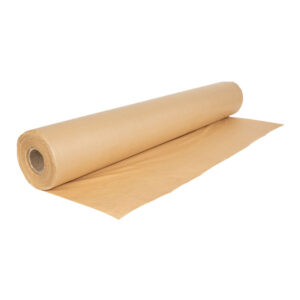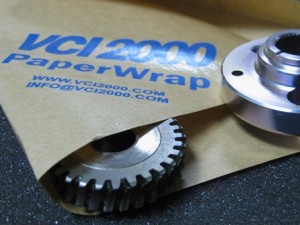In the realms of manufacturing and inventory management, one often underestimated facet is the lifespan of a product on the shelf. The longevity of a product’s shelf life bears immense significance, holding the power to profoundly influence a company’s profitability, customer satisfaction, and overall success. Regardless of whether you’re in the business of dealing with metal components, electronic gadgets, or even food items, the maximization of your inventory’s shelf life should rank among your top priorities.
VCI packaging, a highly effective tool that can substantially enhance your product’s shelf life. VCI packaging has been a game-changer when it comes to preserving the quality and functionality of a wide array of products. In this article, we shall delve into the vital importance of product shelf life, the scientific principles underpinning VCI packaging, and how this technology can serve as a bulwark against product degradation while boosting your company’s bottom line.
The Significance of Product Shelf Life
Product shelf life, put simply, denotes the period for which a product can be stored while retaining its optimal condition for use or consumption. This metric carries paramount importance for any business dealing with perishable or time-sensitive commodities. Here’s why it matters:
-
Customer Satisfaction
The maintenance of a product’s quality and freshness holds the key to customer satisfaction. Nobody wants to receive a product that has deteriorated or become unusable due to inadequate storage conditions.
-
Reduced Waste
Extending a product’s shelf life plays a pivotal role in waste reduction. Products that expire prematurely or degrade are frequently cast aside, ending up in landfills, which not only raises environmental concerns but also translates to financial losses for businesses.
-
Cost Savings
By prolonging a product’s prime condition, businesses can slash restocking frequencies, thereby curbing associated expenses.
-
Market Competitiveness
A lengthier shelf life can serve as a competitive edge. It allows businesses to provide products with extended expiration dates, an enticing proposition that can lure customers and maintain a competitive advantage.
-
Regulatory Compliance
In certain industries, strict adherence to regulations and guidelines pertaining to product shelf life is obligatory. Non-compliance can lead to legal consequences and damage to a company’s reputation.
The Science Behind VCI Packaging
Understanding the efficacy of VCI packaging necessitates grasping the science underpinning this technology. Vapor Corrosion Inhibitors, often referred to as volatile corrosion inhibitors, are compounds that release a protective vapor into the air within an enclosed space. These vapors create an imperceptible, delicate layer on the surface of products, effectively thwarting corrosion, and degradation.
The scientific basis of VCI packaging hinges on the principle of electrochemical protection. When metals meet oxygen and moisture, they undergo oxidation and corrosion. VCI molecules, when released into the air within a packaged enclosure, fashion a protective shield on the metal surface, thereby inhibiting the oxidation process. This protective cloak acts as a barrier, effectively preventing moisture and oxygen from infiltrating the metal. Consequently, the product remains free from corrosion, retaining its structural integrity.
VCI packaging’s efficacy lies in its ability to deliver comprehensive protection, enveloping not just the product’s exterior but also reaching concealed and hard-to-access areas such as crevices and corners.
How VCI Packaging Sustains Product Freshness
Now that we have demystified the science behind VCI packaging, let’s delve into how it actively contributes to the extension of your product’s shelf life:
-
Corrosion Protection
VCI packaging emerges as exceptionally effective in staving off corrosion in metal parts and components. It finds extensive utility in the automotive and aerospace industries, where critical components must be shielded from rust and corrosion. By negating the need for additional coatings or rust inhibitors, VCI packaging not only economizes costs but ensures that parts remain pristine and functional when required.
-
Electronics Preservation
Electronic gadgets are acutely susceptible to moisture and oxidation, culprits that can lead to malfunctions and a curtailed lifespan. VCI packaging stands out as a preferred choice for preserving electronic components and devices during storage and transportation. It forms a protective cocoon around delicate electronic circuits and connectors, insulating them from environmental contaminants, and thus ensuring that products function as intended when they reach the end-user.
-
Food Storage
The utility of VCI packaging is not confined to industrial applications alone. It emerges as an asset in the context of extending the shelf life of food products. By creating a protective atmosphere within the packaging, VCI technology keeps perishable goods fresher for longer durations. This is particularly significant in the agricultural and food processing industries, where reducing spoilage and waste assumes utmost importance.
-
Long-Distance Shipping
Products often traverse vast distances before reaching their ultimate destination. During transit, they are exposed to diverse climatic conditions, including humidity and temperature fluctuations. VCI packaging serves as a guardian, shielding products from environmental factors that could lead to degradation or damage. Its role is especially crucial for products with extensive supply chains, such as those engaged in international trade.
-
Green and Sustainable
In addition to its protective attributes, VCI packaging champions environmental sustainability. It obviates the need for conventional rust-preventative oils, coatings, or other hazardous chemicals. By minimizing the use of these substances, VCI packaging paves the way for a more eco-friendly and sustainable approach to product preservation and protection.
Implementing VCI Packaging in Your Operations
To harness the full potential of VCI packaging and maximize your product’s shelf life, effective implementation within your operations is imperative. Here are key steps to consider:
-
Identify Vulnerable Products
Initiate the process by identifying the products within your inventory that are most susceptible to corrosion, oxidation, or degradation. These are the items that stand to gain the most from VCI packaging.
-
Choose the Right VCI Packaging
An array of VCI packaging materials exists, each tailored for specific applications. Select the VCI packaging materials best suited to your products and storage conditions. Whether it’s VCI bags, paper, films, or emitters, the correct choice is pivotal for optimal outcomes.
-
Train Your Team
Educate your team on the correct usage of VCI packaging. They must comprehend the proper techniques for enclosing products and ensuring a sealed environment to forestall moisture and oxygen infiltration.
-
Monitor and Replace as Needed
VCI packaging is not a one-time panacea. Over time, the efficacy of VCI molecules may diminish. Thus, it is essential to conduct regular inventory checks and replace packaging as necessary to perpetuate protection.
-
Quality Control
Incorporate a quality control system to scrutinize the effectiveness of VCI packaging at regular intervals. This may encompass periodic inspections and testing to guarantee the continued activation of VCI protection, thereby ensuring the safety of your products.
Conclusion
Enhancing the shelf life of products is an overarching concern for businesses spanning a myriad of industries. Be it metal components, electronic devices, or food items, the preservation of product quality and functionality ranks high on the list of priorities. Vapor Corrosion Inhibitor (VCI) packaging






